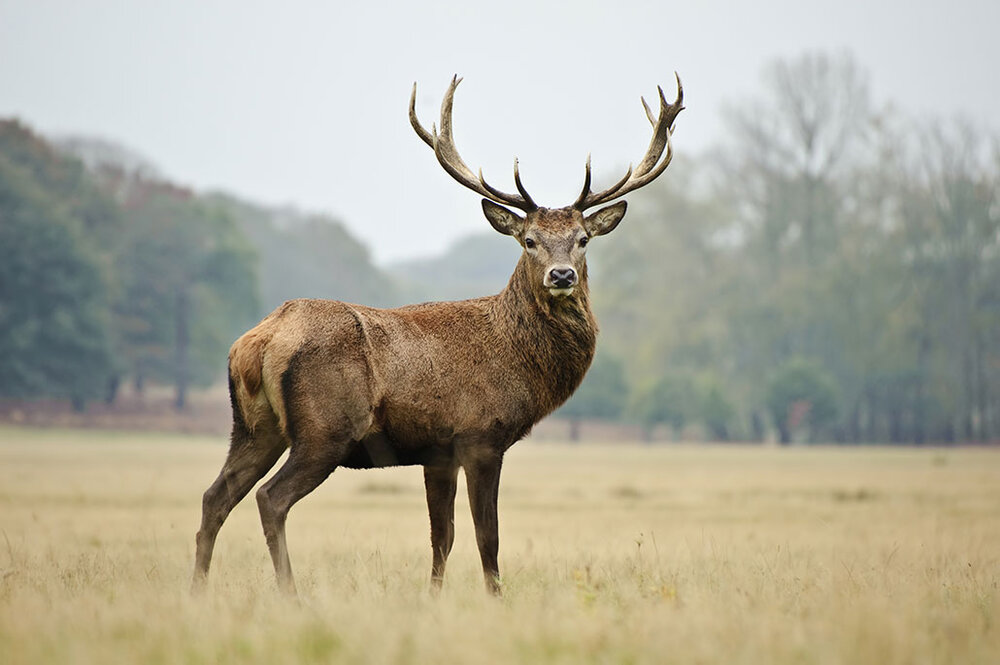Habitat destruction, illegal hunting threat Persian red deer

TEHRAN – Maral, the Iranian red deer, is pushing toward extinction due to habitat destruction and illegal hunting.
Maral, along with “Roe deer” and “Persian fallow deer”, are three species of deer in Iran.
Recently, the head of the provincial department of environment Hassan Abbasnejad announced the implementation of a plan on the conservation of Persian fallow deer and red deer in Arasbaran forests in the northwestern East Azarbaijan province.
Explaining that there are two types of management for wildlife management, he said that one type of management is “long-term”, which is based on the restoration and protection of the habitat so that the animal can reproduce naturally in the safe area with the required resources.
As the situation becomes more critical, along with this long-term action, “short-term” action is taken, which is captive breeding, through which, the animal reproduces under certain conditions and is released into nature in order to increase its population, he further added.
The Department of Environment is in charge of wildlife management and should increase the population of endangered species to the desired level, or reduce the population of some species, he said, noting, it is done well across the country, but the focus is on the restoration.
“Maral”, “Roe deer” and “Persian fallow deer”, are three species of deer in Iran. Arasbaran forest has unique animal and plant species and a special climate, and is being registered by UNESCO so that the most important species of the forest must be revived, he highlighted.
One of the problems facing not only red deer but also the entire wildlife of Iran is the depletion of natural habitats that are mostly caused by humans, such as road construction, water pipes, urban and rural development, land conversion into agriculture, he stated.
On the other hand, climate change, global warming, drought, and low rainfall have naturally limited the habitat of the country's animals, including marals, he further lamented.
Unfortunately, as a result of road construction, the deer population is fragmented and its habitat is limited, he stressed, lamenting that this condition has caused a genetic separation among species of red deer.
Population fragmentation may lead to the extinction of the marals over time because they have no genetic exchange, Alizadeh regretted.
Cited hunting as another important threat to the precious species, he noted that poachers know in what season to hunt. So, in the breeding season, environmentalists are invited to protect the maral habitat helping rangers.
Carnivores are at the top of the food pyramid and are considered a kind of “umbrella species”. When carnivores live in a habitat, it means that the whole cycle of the ecosystem is working properly, so that, from seed sowing to planting and animal production, it is properly formed so that the carnivore can feed on the vegetarian, he concluded.
The Iranian red deer is one of the largest deer types that unfortunately their population has declined in the country. However, the red deer occur literally from the shores of the Caspian Sea to the high alpine meadows of the Alborz Mountains.
The mating of red deer begins in the second half of September each year and lasts for a month.
According to the latest monitoring in maral habitats during the mating season, the population of this species in Golestan National Park has been counted 612, which was recorded 540 last year, director of Golestan National Park Mehdi Teymouri said.
Road construction, land-use change and livestock overgrazing in the Hyrcanian forests, and, most importantly, the presence of poachers are among the main factors influencing the decline of the maral population, he lamented.
More than 2,000 marals lived in the park, according to the animal population census of the late 1970s, which dropped by 80 percent to about 200 in the early 2010s, he stated.
FB/MG
Highlight:
